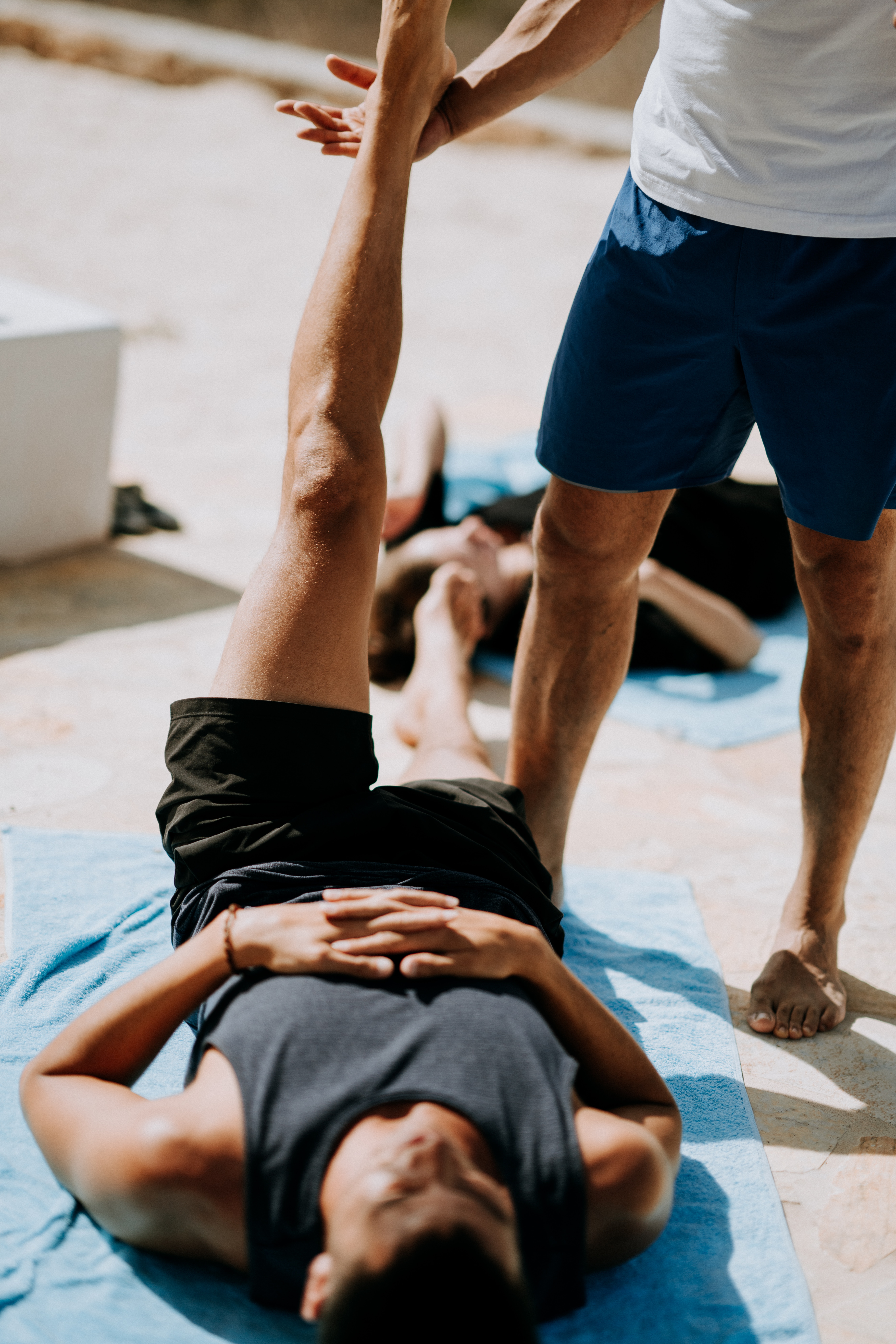
Prostate Cancer Fitness: Enhancing Health and Well-Being During Treatment
Prostate cancer is a major health concern affecting millions of men worldwide. While medical treatments like surgery, radiation, and chemotherapy are critical, incorporating fitness into the treatment plan can significantly enhance overall health and well-being. In this blog, we’ll explore the importance of fitness for prostate cancer patients, including specific exercises, dietary tips, and the role of theranostics in advanced treatment.


Understanding Prostate Cancer
Prostate cancer develops in the prostate gland, which is responsible for producing seminal fluid in men. It’s one of the most common cancers among men, particularly those over the age of 50. Early detection and treatment are crucial for managing the disease and improving survival rates.
The Role of Fitness in Prostate Cancer Management
Maintaining physical fitness during prostate cancer treatment can offer numerous benefits, including improved physical strength, reduced treatment side effects, enhanced mental health, and better overall quality of life. Here are some key reasons why fitness is essential:
- Improves Physical Strength: Regular exercise helps maintain muscle mass and bone density, which can be compromised during cancer treatment.
- Reduces Treatment Side Effects: Exercise can alleviate common side effects of prostate cancer treatments, such as fatigue, nausea, and muscle weakness.
- Enhances Mental Health: Physical activity is known to reduce stress, anxiety, and depression, contributing to a better emotional state.
- Boosts Immune Function: Regular exercise strengthens the immune system, helping the body fight cancer cells more effectively.
Recommended Exercises for Prostate Cancer Patients
Different types of exercises can benefit prostate cancer patients in various ways. Here’s a breakdown of recommended exercises and their benefits:
Aerobic Exercise
Aerobic exercises are essential for cardiovascular health and overall stamina. They help increase heart rate and improve oxygen circulation in the body.
- Walking: A simple and effective way to stay active. Aim for at least 30 minutes of brisk walking daily.
- Cycling: Low-impact exercise that strengthens the legs and improves cardiovascular health.
- Swimming: Provides a full-body workout without putting stress on the joints.
Strength Training
Strength training helps maintain muscle mass and bone density, which can be affected by cancer treatments.
- Weight Lifting: Use free weights or resistance bands to strengthen major muscle groups.
- Bodyweight Exercises: Push-ups, squats, and lunges are excellent for building strength without needing equipment.
- Resistance Bands: Effective for low-impact strength training, ideal for those with joint issues.
Flexibility and Balance Exercises
Improving flexibility and balance can help prevent falls and enhance overall mobility.
- Yoga: Combines physical postures, breathing exercises, and meditation to improve flexibility and mental well-being.
- Tai Chi: A gentle form of martial arts that focuses on slow, controlled movements to improve balance and flexibility.
- Stretching: Regular stretching exercises can increase flexibility and reduce muscle stiffness.
Creating a Personalized Fitness Plan
Before starting any exercise regimen, it’s crucial to consult with healthcare providers to create a personalized fitness plan tailored to individual needs and limitations. Here are some tips for creating an effective plan:
- Start Slow: Begin with low-intensity exercises and gradually increase the intensity as your strength and stamina improve.
- Set Realistic Goals: Establish achievable goals to stay motivated and track progress.
Incorporate Variety: Include different types of exercises to keep the routine interesting and work for various muscle groups.
- Listen to Your Body: Pay attention to how your body responds to exercise and adjust the intensity or duration as needed.
- Stay Consistent: Regular exercise is key to reaping the benefits, so aim to stay active most days of the week.
Dietary Tips for Prostate Cancer Patients
A balanced diet is crucial for supporting overall health and complementing the benefits of regular exercise. Here are some dietary tips for prostate cancer patients:
Focus on Plant-Based Foods
- Fruits and Vegetables: Rich in vitamins, minerals, and antioxidants that support immune function and overall health.
- Whole Grains: Provide essential nutrients and fiber, helping to maintain energy levels and digestive health.
- Legumes and Nuts: Excellent sources of protein and healthy fats.
Limit Red and Processed Meats
- Lean Proteins: Opt for chicken, fish, and plant-based proteins instead of red and processed meats, which can increase cancer risk.
- Processed Meats: Reduce intake of processed meats like sausages and deli meats, which are linked to higher cancer risk.
Healthy Fats
- Omega-3 Fatty Acids: Found in fish, flaxseeds, and walnuts, omega-3s have anti-inflammatory properties and support heart health.
- Monounsaturated Fats: Olive oil, avocados, and nuts provide healthy fats that support overall well-being.
Stay Hydrated
- Water: Aim to drink at least 8 cups of water daily to stay hydrated and support bodily functions.
- Herbal Teas: Provide hydration and additional health benefits, such as anti-inflammatory properties.
The Role of Theranostics in Prostate Cancer Treatment
Theranostics is an innovative approach that combines diagnostics and therapy to create personalized treatment plans. This method is particularly promising for prostate cancer patients.
How Theranostics Works
- Diagnosis: Uses imaging agents to detect cancer cells accurately.
- Targeted Therapy: Delivers therapeutic agents directly to cancer cells, minimizing damage to healthy tissues.
Benefits of Theranostics
- Precision: Offers highly targeted treatment, reducing side effects.
- Personalization: Tailors treatment plans to individual patient needs.
- Monitoring: Allows for real-time tracking of treatment efficacy.
Integrating Fitness with Advanced Treatments
Combining fitness with advanced treatments like theranostics can offer a comprehensive approach to managing prostate cancer. Here’s how to integrate fitness with your treatment plan:
Collaborate with Healthcare Providers
- Medical Clearance: Ensure you have medical clearance before starting a new fitness regimen.
- Regular Check-ups: Monitor your health regularly to adjust your fitness plan as needed.
- Integrated Care: Work with a team of healthcare providers, including oncologists, nutritionists, and physical therapists, to create a holistic care plan.
Adapt to Treatment Phases
- Pre-Treatment: Focus on building strength and stamina to prepare your body for treatment.
- During Treatment: Adjust intensity based on how your body responds to treatments like theranostics.
- Post-Treatment: Gradually increase activity levels to aid in recovery and maintain overall health.
Mind-Body Connection: The Psychological Benefits of Fitness
Fitness doesn’t just benefit the body; it also has significant psychological benefits. Prostate cancer treatment can be mentally taxing, and incorporating fitness can help in several ways:
- Reduces Stress: Physical activity releases endorphins, which help reduce stress and promote a sense of well-being.
- Boosts Mood: Exercise is known to combat depression and anxiety, common issues faced by cancer patients.
- Improves Sleep: Regular physical activity can improve sleep quality, which is essential for recovery and overall health.
Community and Support
Engaging in fitness activities can also provide a sense of community and support. Here are some ways to connect with others:
- Join Support Groups: Participate in cancer support groups that offer fitness classes tailored for patients.
- Group Exercise Classes: Join local gyms or community centers that offer group exercise classes.
- Online Communities: Engage with online forums and social media groups focused on fitness and prostate cancer support.
Incorporating Fitness Into Your Treatment Plan
Prostate cancer is a challenging journey, but incorporating fitness into your treatment plan can significantly enhance your quality of life and overall well-being. From aerobic exercises and strength training to dietary tips and the innovative approach of theranostics, there are numerous ways to support your body and mind during this time. By working closely with healthcare providers and staying committed to a fitness regimen, prostate cancer patients can improve their physical health, mental well-being, and treatment outcomes. Stay active, stay informed, and take control of your health for a brighter, healthier future.
